03 Jul How to See a Geisha in Kyoto, Japan
I have been fascinated with the world of geishas. Well, not just geishas but considering the amount of anime I watched growing up, all of Japan. But the world of geisha especially ignited a spark in me after I watched the movie ‘Memoirs of a Geisha’. And even more so after I read it in the book.
And the reason it is so intriguing to outsiders is that this world is guarded by the surrounding communities. Few foreigners are allowed to enter inside unless the top Japanese businessmen invite you to one of the teahouses where geishas join them to entertain. More on that later.
But we still don’t have the answer to how to see a geisha in Kyoto. There are a few options for that. But would you like to know more about geishas before that?
I am going to share it anyway.
Travelling to Kyoto? Here is our 3-day itinerary to Kyoto for first-time travellers
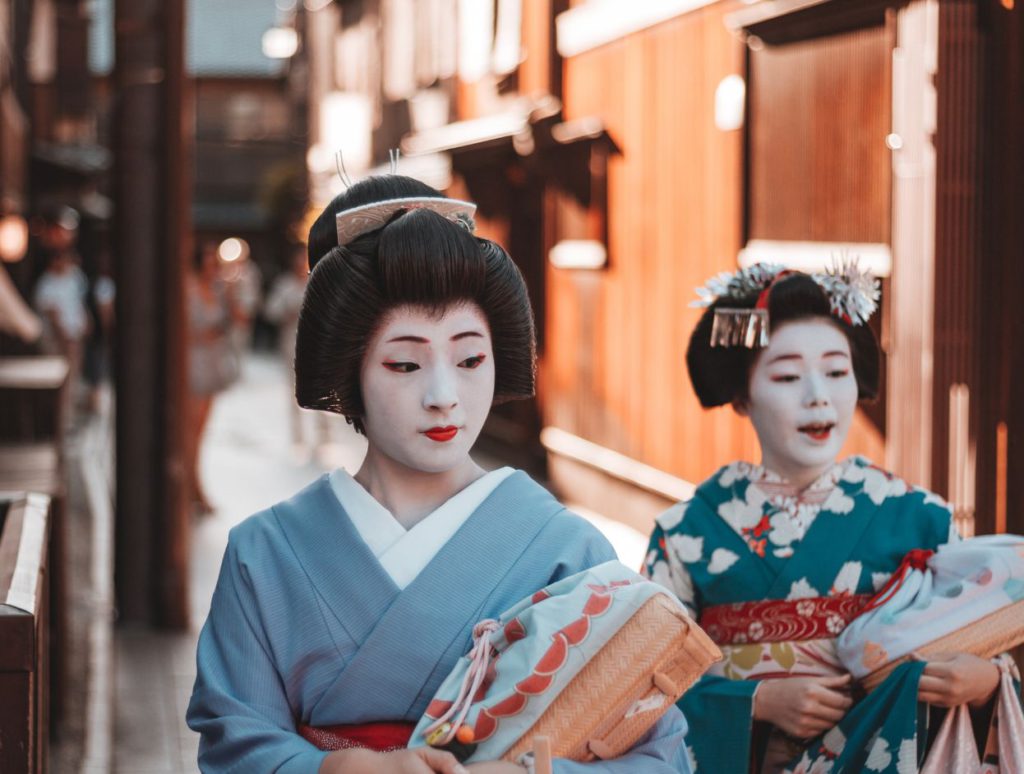
A Brief History of Geishas
The first emergence of geisha started around the 18th century. Japan had quite a few pleasure houses where men would go seeking sexual pleasure. But in time, entertainment centres developed inside the pleasure house unrelated to sex. Several courtesans came to perform for their clients by dancing, singing and playing music. And these people grew to be oiran, sort of celebrities of their time.
Surprisingly some of the earliest entertainers were males. They were courtesans who used to travel from clan to clan in feudal and entertain in their royal homes. Female entertainers also appeared. Since there were so many clans and rivals during feudal Japan, these entertainers were able to gather a lot of information during their travel. And that information gave them authority and power.
By the start of the 19th century, the term geisha was used by women entertainers who entertained the merchant class. Their profession was gradually segregated from the pleasure houses. It later became rare for them to engage in any type of physical relationship with their customers. But some still did.
As the wealth of the merchant class increased, so did the popularity of geisha entertainers. By the 1830s, geisha were considered the premiere fashion and style icons in Japanese society. The post-World War era saw a considerable drop in the number of girls pursuing this profession. The criminalising of prostitution also benefitted the community by giving them more freedom in their private lives.
Today in modern-day Japan, while the number of geishas is decreasing with time. Geishas are highly respected and are considered preservers of Japanese culture and tradition. Their life isn’t easy as well and that is the reason most girls are hesitant to choose this as their identity.
Who is a Geisha?
Now that you already know how geishas came to be, let’s understand who are they in modern Japan. It is almost rude to address someone as a geisha in Kyoto. Instead, people usually address them as geiko-san and maiko-san.
You can recognise a geisha by their porcelain skin that they have painted white. It was once considered a sign of beauty paired with bright red lips. Their hair is made into half-moon buns decorated with beautiful hairpins that usually depict the seasons of the year. And of course, you cannot miss the beautiful elaborate and expensive silk kimonos they wear.
A girl starts her career to become a geisha when they are around 9-11 years old. This includes years of training in dance, music and performing arts before they can present themselves in public. Once they complete their training, they first appear in public as maiko-san, which are apprentices to geiko-san. Usually, they are still trained by an older sister, a geiko-san and are still learning from them.
On the other hand, once they have enough experience and have paid their debts to the okiya (the house each maiko belongs to), they become geiko-san usually around the age of 20-21 years. While they still belong to their okiya, they can take up work with more flexibility. They need not stay in the okiya, unlike a maiko-san.
A geisha cannot marry and work at the same time. If they choose to marry, they need to leave this profession. Or if they wish to remain a geisha their whole life, they cannot marry. Although in modern times they can have a lover or even a child. Since geishas start their training early in their life they also miss out on a typical school and college education. Most of them can only speak Japanese.
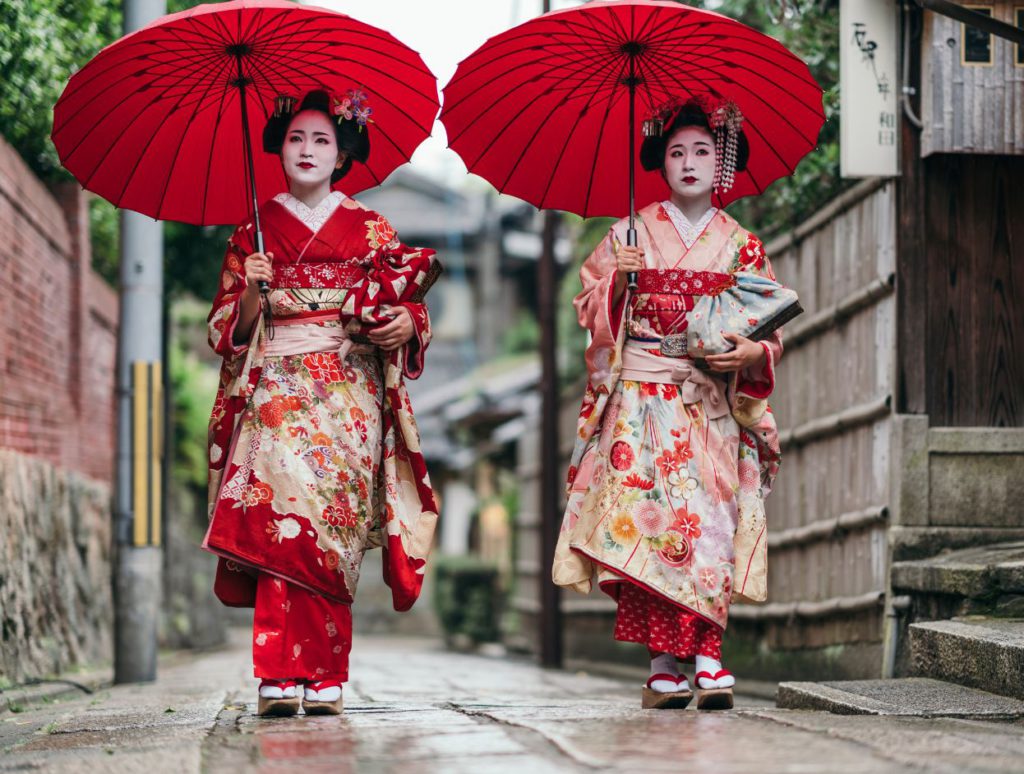
What do Geishas do?
By now you know that by profession geishas are entertainers. Which means that they are skilled in singing, dancing, musical instruments and performing arts. And that’s what they are hired for. But to get a geisha’s time is so expensive that only a few can afford it.
A maiko-san or a geiko-san are usually invited by top businessmen to their formal and informal gatherings to add a touch of beauty and fun to them. Japanese work culture is quite drab and simple presided mostly by elderly men. On top of it, Japanese work culture also requires its employees to sit together for drinks and food after working hours. And that is where geishas come in.
It is mostly Japanese businessmen and politicians who request the company of geishas at their gatherings to brighten it up. Apart from singing and dancing, geishas are also well-versed in entertainment and drinking games. And they aid to add a more cheerful and feminine side to the otherwise bland gathering.
Women also request the presence of geishas. Sometimes for tea ceremonies during the day or for gathering with cultural performances.
As of now, a maiko charges around USD 500 an hour. Whereas you will need to pay around USD 2000 an hour to have a geiko around. However, it is not as easy as walking into a teahouse and meeting someone.
One can only request the presence of a maiko-san or a geiko-san by having connections or relations with one of the okiya (the house where geishas belong to). Moreover, you may need to open an account with them since they bill you a couple of months after your visit. The whole thing just runs on trust.
By now you know why it is not so easy to walk into Kyoto and enjoy the company of a geisha.
How to see a Geisha?
Now we come to the big question. There are a few ways you can spot a geisha inside Kyoto. But beware that since there are makeup shops for tourists to dress as maiko-san for the day, you may just end up seeing a few tourists that you may confuse with a geisha.
1. Book a private audience
Even though I have told you till now that it is not possible to get entry to the teahouses, there is actually one teahouse that accepts foreign travellers. You see, with time this industry is also not thriving with the intensity it used to be. Therefore, some places have started opening themselves to more global customers. However, all conversations and performances still take place in Japanese but you can always request a translator with an additional fee.
The cost for a private audience will be between USD 400-1000 for 2 hours. You can go as an individual, couple, family or even a group with upto 20 people. You can also ask for the number of geikos or maikos to be present for the dinner. The dinner includes the traditional Kaiseki meal, dance performances, wearing a kimono upon request, drinks upon request, drinking games and lots of photographs.
Another option is to book a tea ceremony with a maiko-san where they prepare tea for you in the traditional way. You will still get a private audience but won’t last as long. The price for a tea ceremony is around USD 300.
To book this experience, you can click on the link below to fill out the form with your requirements. They will get back to you with a quote and you can pay using your credit card.
Book a private dinner with a geisha: https://www.miyakojapan.com/exclusive-geisha-experience
Book a tea ceremony with a geisha: https://mai-ko.com/culture/tea-ceremony/
2. Book a shared Maiko experience
If you are not looking to spend as much for a private dinner or tea ceremony with a geisha, there are also options to attend a group ceremony. But you will have to share the experience with a few other tourists. Depending upon your experience, this can include entry to a tea house, dinner, drinks, a tour of Gion and even a guide who will help translate the experience.
The maikos perform for you in the form of singing or dancing. There is usually a Q&A session later on where you can ask all the questions you want. The only downside is that experience sometimes is not so thoughtfully planned with several tourists sitting in queue one behind another. If you can, pay extra and get the front-row seats and I am sure the experience will not disappoint you.
Book a lunch or dinner experience with a Maiko:
Kyoto: Uncover the Hidden World of Japanese Maiko (small group of upto 8 people)
Lunch or Dinner with Maiko Experience in Kyoto (big group of upto 20 people)
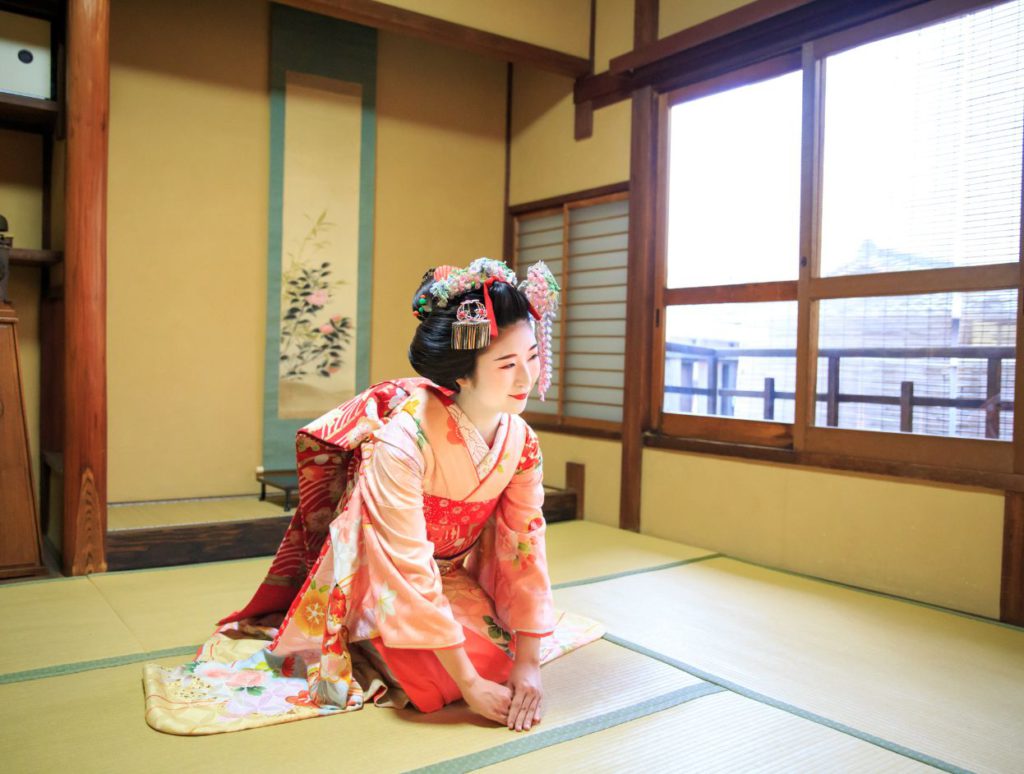
3. Watch a regular dance performance
Since the primary reason for a geisha’s existence is the performing arts, there are several performing theatres in Kyoto to cater to this. The most common one is the Gion Corner where daily performances take place along with a few other activities like tea ceremony and flower arrangement. Some activities are seasonal as well. You can find more details like seating plan, ticket price, timings and venue on their official website.
Another place where you can experience this is Maikoya. This is often paired with a tour of the Gion district where a guide will talk you through the history, culture and significance of these traditions. Although this experience is way pricier compared to the one above but also more premium and personal. Book the experience on their official website.
Looking for unique experiences? Here is our list of some experiences in Kyoto that you should not miss
4. Watch a seasonal dance performance
While you can always catch one of the regular performances, a seasonal dance performance is something special in Kyoto. Geishas from several Okiyas come together to create a special dance performance for the season that changes every year. The most elaborate of all is Miyaki Odori which takes place between the 1st and the 21st of April during the cherry blossom blooming season. This takes place at the Minamiza Theatre.
Gion Odori is another seasonal performance that takes place in October to celebrate the fall season. This takes place between the 1st and 10th of November at the Gion Higashi Theatre with two performances every day.
Other notable dance performances are Kiyo Odori in Miyagawacho which takes place in April and October, Kamogawa-Odori at Pontocho in May and Kitano-Odori in Kamishichiken which takes place several times a year.
You can get more details about the show and purchase a ticket at the respective theatre’s websites. Most of these dance performance also has the option to add a tea ceremony. There you can see a geisha up close where someone will serve you some green tea and a sweet to go with it. Definitely go for this experience.
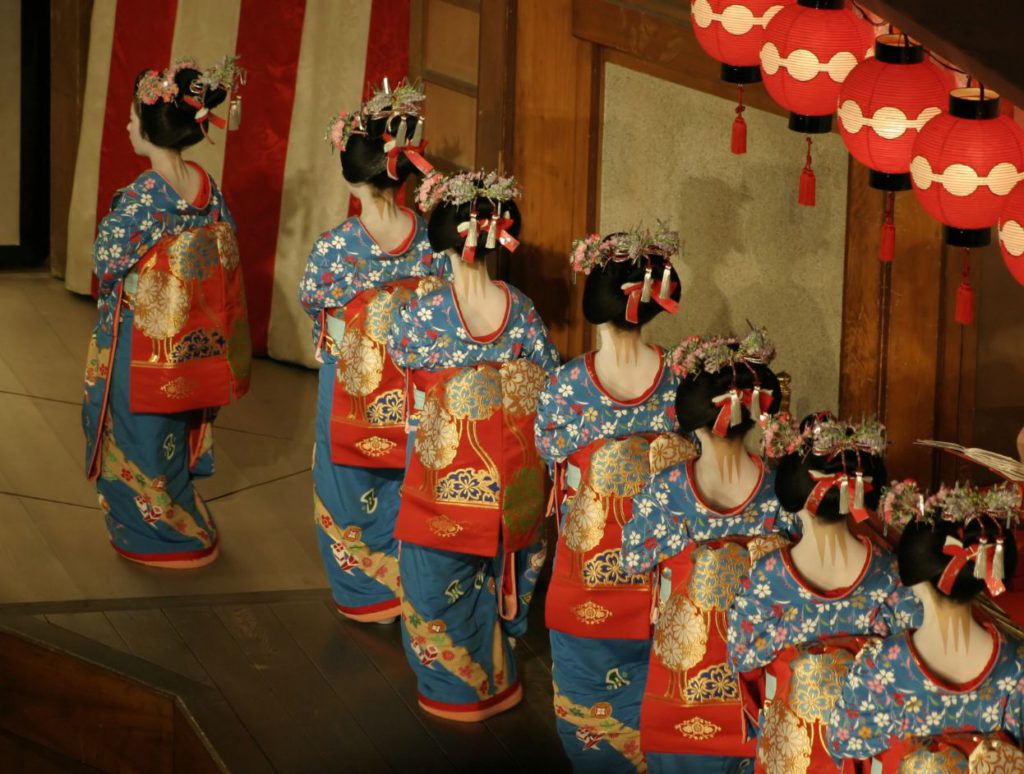
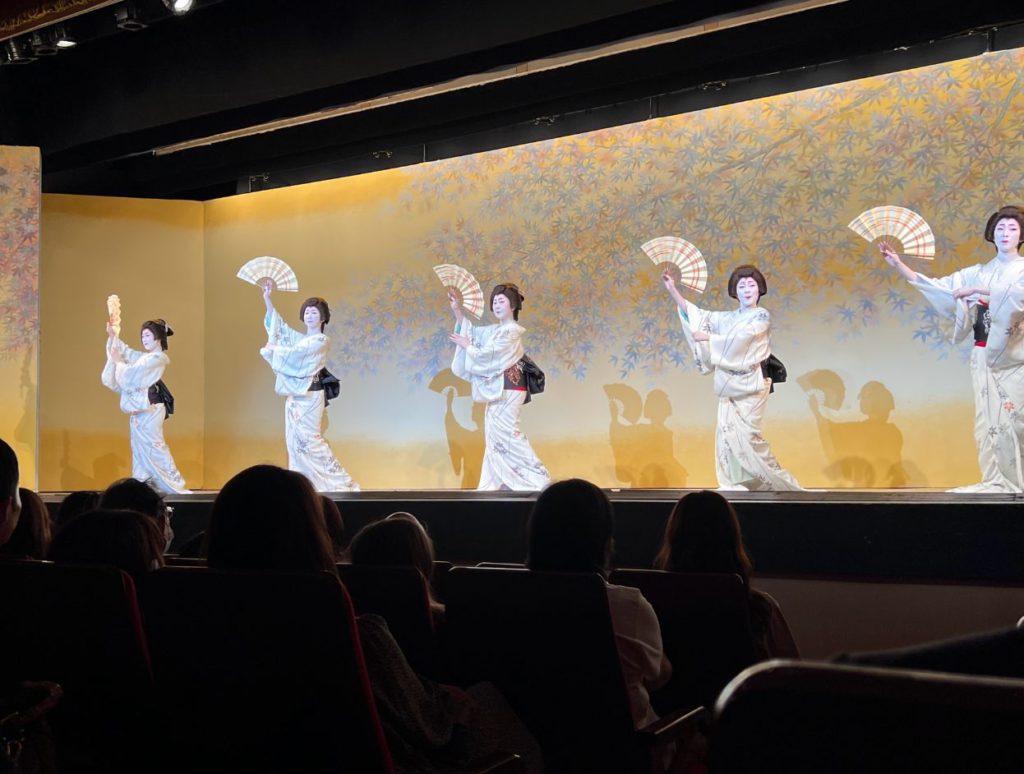
5. Spot them in the streets of Gion
You can do this of course, but a lot of this will depend upon your luck. If you decide to go out looking for a geisha in Gion then the best time to spot one is during the evening hours when they head out for work. Look out for Hanami Koji Street and Shijo Street right in front of Ichriki Chaya during the early evening hours.
You are more likely to see a geisha on Friday or Saturday and much less likely on a Sunday, Monday or a national holiday. You can easily spot them during the Gion Matsuri festival. It takes in Kyoto sometime in July when the streets fill with artists and performers around the religious procession.
However, you must behave well when you see a geisha. Kyoto city has now made it illegal for tourists to touch, chase or even take a photo of or with a geisha due to a few unruly tourists who behaved badly. Someone may fine you for it. Do not get too close or touch their garments. Keep your distance and if you wish to take a photograph do that from behind only.






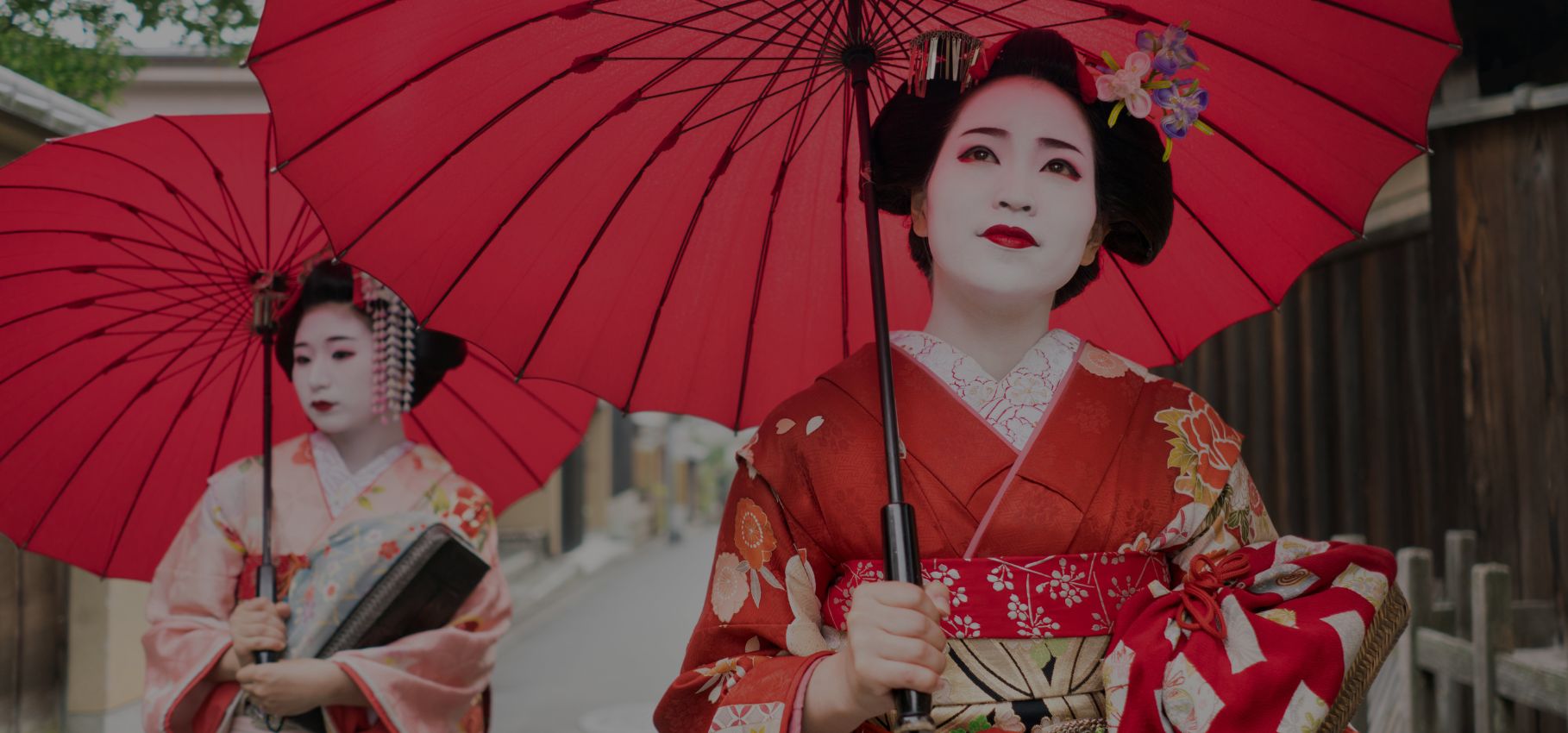
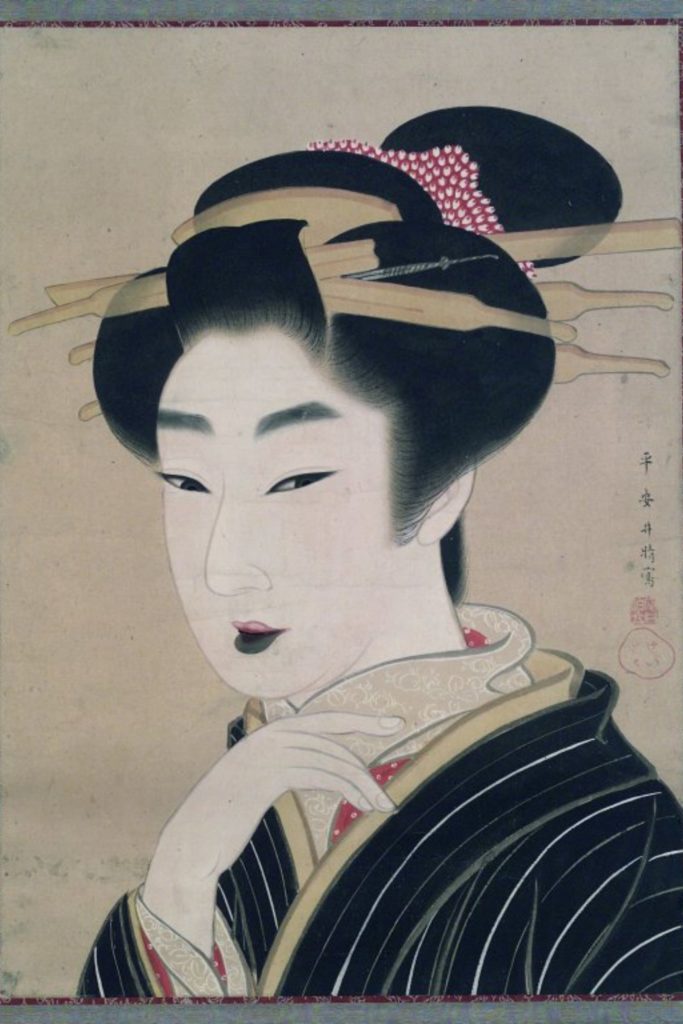
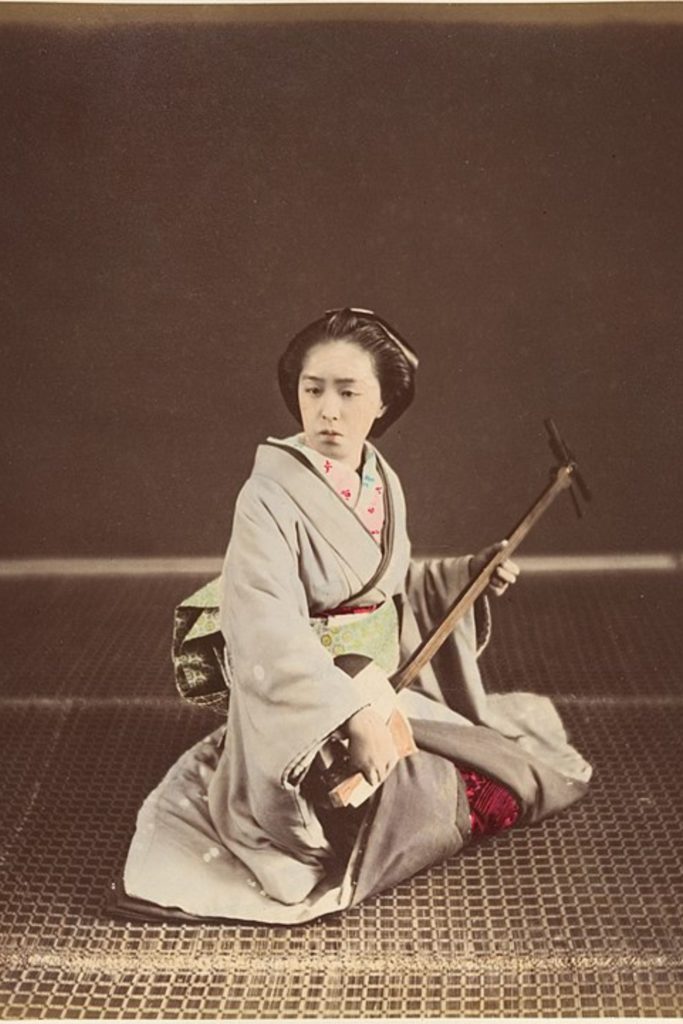
No Comments